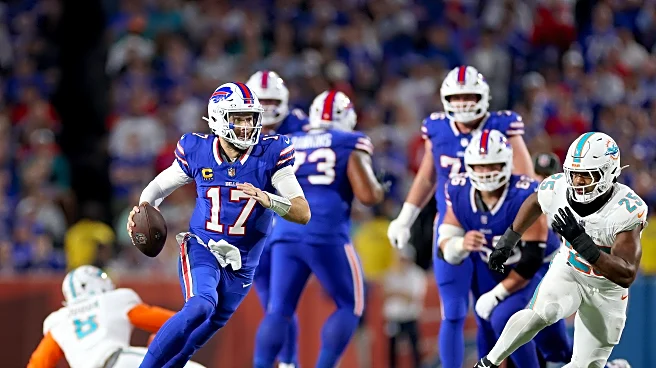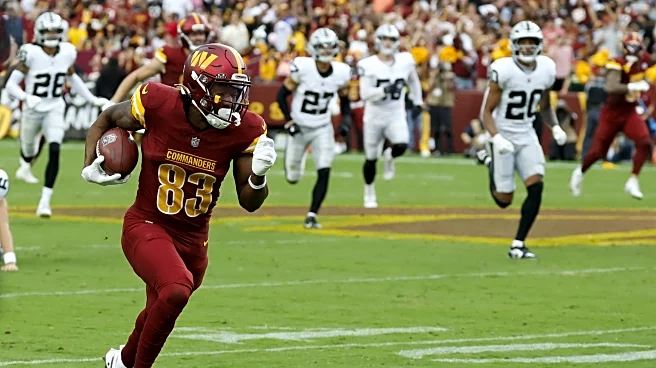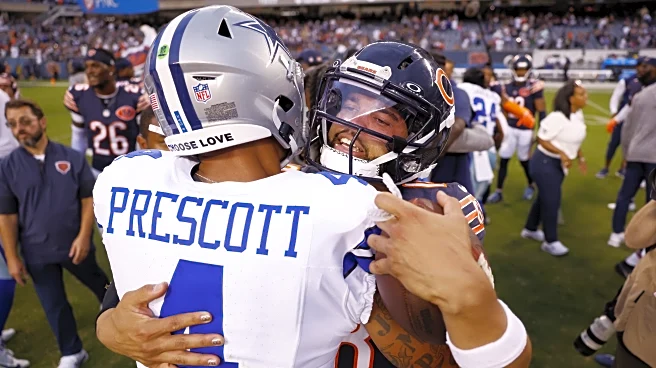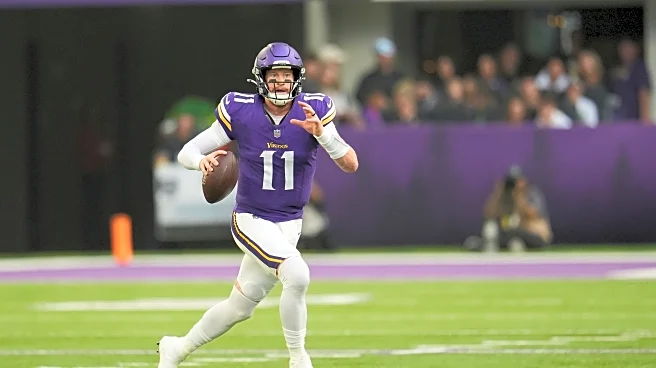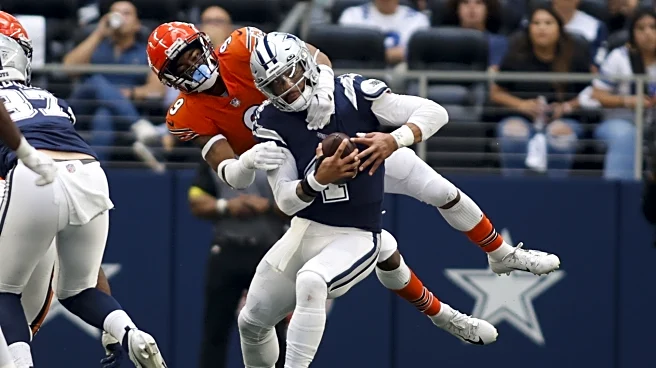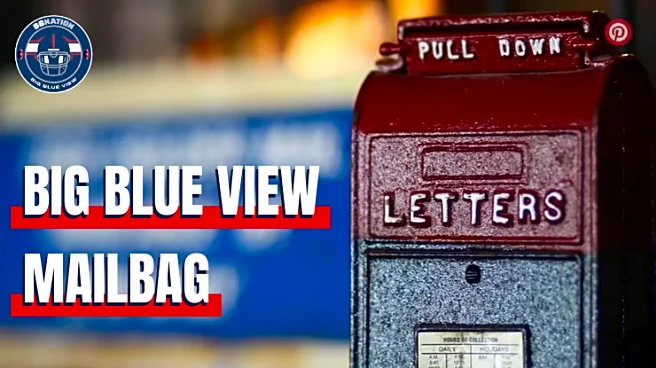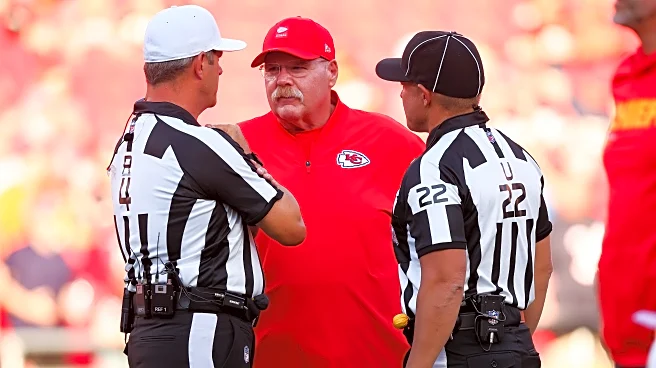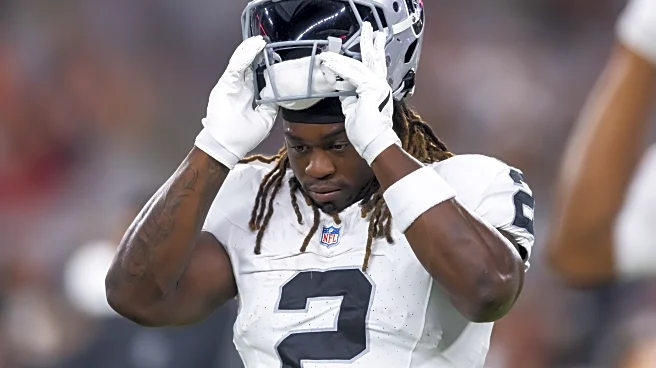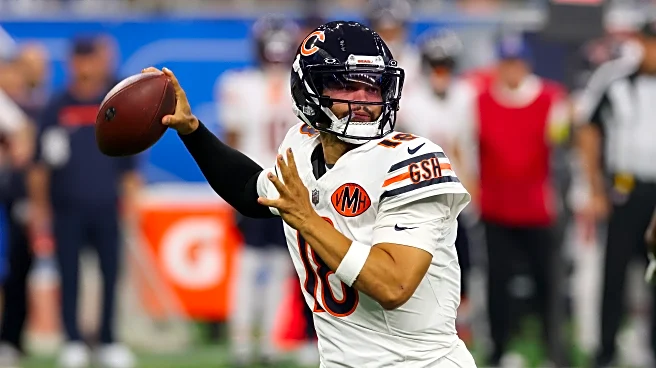After two bad Russell Wilson performances and one good one as a New York Giant, fans seem ready to move on and put Jaxson Dart in for something other than a few zone reads. Brian Daboll may be ready too,
if his evasive answers to the quarterback question at Monday’s presser suggest.
Here’s the question, fans: How long a leash are you willing to give Dart? Here was Dane Brugler’s take on Dart in The Beast
:With his physical tools and rhythm passing, he was an ideal fit in Kiffin’s quarterback-friendly offense, although the simplistic nature of the scheme leaves NFL scouts questioning his post-snap decision-making process when reads aren’t as structured and predetermined. The other key concern is his tendency to prematurely drop his eyes once the pocket gets heated. However, his athleticism to buy time and scramble for positive yards is an asset. Overall, Dart needs time to develop his progression-based reads and anticipation (things he wasn’t asked to regularly do in college), but he is a natural thrower of the football with promising mobility and high-level competitive intangibles. If allowed to develop at his own pace, he offers NFL starting upside in the right situation.
Question: Are the Giants the right situation? Daboll is now unofficially fighting for his coaching life in New York. Does “developing at his own pace” = making him the starter in Week 4 or 5?
Fortunately, almost every year some NFL team is in a situation similar to what the Giants face, so we have plenty of data. Let’s take a look at draftees by year to see how long it takes for them to live up to their potential.
2025
We’ll start with Dart’s classmates, some of whom have already seen the field if only briefly:

If Dart does start, he’ll only be the second member of the Class of 2025 to do so. Cam Ward, the No. 1 pick, has started all three games for fellow winless team Tennessee. His stat line isn’t thrilling: 56.5% completion rate, 2 TDs, 1 INT, as many turnover-worthy plays as big-time time throws. And of course, zero wins, albeit against teams that have gotten off to a good start.
It’s too soon to evaluate him, though. Let’s go back a year to the more ballyhooed Class of 2024, now in their second year. These are the quarterbacks Dart will always be compared to since the Giants had a chance to draft one of them and chose Malik Nabers instead:
2024

Jayden Daniels has had the most success of this group so far in his career. I’m sure most Giants fans would take him in an instant if they could. The jury is still out on Caleb Williams, who had a rough rookie year. His first two starts in 2025 were no bargain either, but he played very well this weekend… against the same defense that the maybe soon-to-be-benched Russell Wilson passed for 450 yards against. Most people think Drake Maye is going to be the real deal, but if you watched Sunday’s winnable game against Pittsburgh, he was one of the reasons they lost, with three turnover-worthy plays, one of which was intercepted in the end zone. Spencer Rattler has done some good things, but in 1+ seasons he has 22 turnover-worthy plays vs. only 10 big-time throws. J.J. McCarthy had an exciting debut against the Bears in which he was awful early and then led a great comeback. In Week 2 against Atlanta, though, he was awful with no TDs and 2 INTs plus another injury. Michael Penix Jr. has one TD in three games and had a terrible showing this past Sunday against Carolina, but he’s played well occasionally (e.g., against the Giants last season). Bo Nix was the second-most successful rookie quarterback in 2024, taking Denver to the playoffs, but this year he’s been subpar so far, with six turnover-worthy plays against only 3 TDs.
Most of these quarterbacks are struggling to break 60% completion rate. Still, it’s early for them, and it will take time to judge how good they really are. Let’s go back another year.
2023

There were only two draftees of note in this class who have played so far in 2025, and they were considered 1a and 1b in the draft. Carolina chose Bryce Young, who had an awful rookie season on an awful team. C.J. Stroud on the other hand set the league on fire and led the ascendant Houston Texans to the second round of the playoffs. The 2024 season was different. Young started to play better, and Stroud started to play worse, although Houston still made the second round of the playoffs. This year the Texans, like the Giants, are surprisingly off to an 0-3 start, and Stroud has had 3 turnover-worthy plays to only one big-time throw. Young seems to be settling in as an average or slightly above average QB, with 5 turnover-worthy plays to three big-time throws.
Stroud and Young were not the only high-profile QBs from the 2023 class. Anthony Richardson, the No. 4 pick, lost his job to Daniel Jones after being forced into the starting lineup before he’d actually learned how to play quarterback. Will Levis was once regarded as a possible top 10 pick, but he dropped to Round 2, and after two seasons with as many turnover-worthy plays as big-time throws, he was pushed aside for Cam Ward and is now on season-ending injured reserve after shoulder surgery.
2022

Fuhgeddabout it. Only one quarterback of note emerged from this class – Mr. Irrelevant, Brock Purdy. Despite signing a big contract in the off-season, he is off to only a slightly above-average start, with as many INTs as TDs. He has exceeded all expectations coming out of college, though.
OK, one more year:
2021

This was another ballyhooed class, if you remember. Five quarterbacks were projected to go in the first round, maybe three in the top 10, and that’s exactly what happened. And guess what? Not a single one of them has become a “franchise quarterback.” No. 1 pick Trevor Lawrence seemed like the poster child for that, and indeed he has started for Jacksonville since his rookie season. He even got them a playoff win. Five years in, though, he is seen as nothing more than an OK quarterback, despite the Jaguars having signed him to a contract befitting an elite QB. Zach Wilson was a disaster from Day 1 and is now a backup. Trey Lance (who hasn’t played in 2025) never really became a starting QB. Justin Fields, whom the Giants passed on, is now the Jets’ starter, and is more dangerous running than passing the ball, with 3 turnover-worthy plays vs. only 1 big-time throw so far. Mac Jones, the forgotten man of the class, is now Purdy’s backup. He had a nice game on Sunday filling in for the injured Purdy but may be back on the bench next Sunday if Purdy returns.
Who are the franchise quarterbacks in the NFL today?
You might think that a few of the names I’ve mentioned up to this point are part of the answer to that question. I probably would, too. Daniels looks the part after his rookie year, and I’d guess that Maye will get there. Stroud is a bit of an enigma but maybe he’ll bounce back. I won’t be surprised if Ward becomes one. Through the past five years of drafts, though, the “franchise QB” club sure doesn’t hasn’t admitted many new members.
You have to go all the way back to the 2020 draft to find quarterbacks that are widely acknowledged as great: Joe Burrow and Justin Herbert are on most people’s lists. Tua Tagovailoa has been good though not great. Jordan Love and Jalen Hurts have had great *team* success in the NFL despite some people having doubts about how great they are individually, outside the context of the talented teams they play for. We’ll put both in the franchise QB club though I see them as a notch below Burrow and Herbert.
Here are the current QB rankings after Week 3 of the 2025 season from RBSDM, based on the combined measures of expected points added (EPA) per play and completion percentage above expected (CPOE):

Other than Maye, the upper right hand quadrant of this scatter plot mostly consists of veteran quarterbacks who have been in the league a least four seasons (including 2025), most of them much more than that. The young guys tend to hang out on the left side and near or below the EPA/play = 0 line, meaning that they aren’t really adding anything to their team’s chance of winning. This chart isn’t the be-all and end-all of the QB discussion, because it’s a small sample early in the season. For example, Russell Wilson is in plus territory, but we know that is based on just one spectacular game. Patrick Mahomes, still for my money the best QB in the game, has been limited by a subpar/injured receiving corps and offensive line so far this season. Still, the young QBs are mostly either still in the prove-it stage or have already shown they’re not going to be elite.
The message? It takes a quarterback a long time to really become good in the NFL. Early success is far from a guarantee of sustained success. Mahomes (who sat until the last game of his rookie season), Daniels, and Stroud are anomalies as far as instant NFL success is concerned, and even Stroud has raised question marks in his third year.
As Giants fans, you should know that. Here are the yearly stats of St. Eli Manning:

Eli was a downright bad quarterback when he replaced Kurt Warner midway through his 2004 rookie season: 48.2% completion rate, 6 TDs, 9 INTs, not even close to 200 passing yards per game. It wasn’t until the final game of that season, when he led a late comeback against Dallas for his first win, that we had even a sniff of how good he was going to become. He didn’t break the 60% completion rate threshold until his fifth season, 2008. As late as the next-to-last month of the 2007 Super Bowl season, there was doubt that he could be the franchise quarterback going forward.
We’ll see whether Dart starts next Sunday. If he does, how long will you give him before the boo-birds come out at MetLife? And they almost certainly will – because it usually takes a good quarterback a while to become good at the level of today’s NFL.

